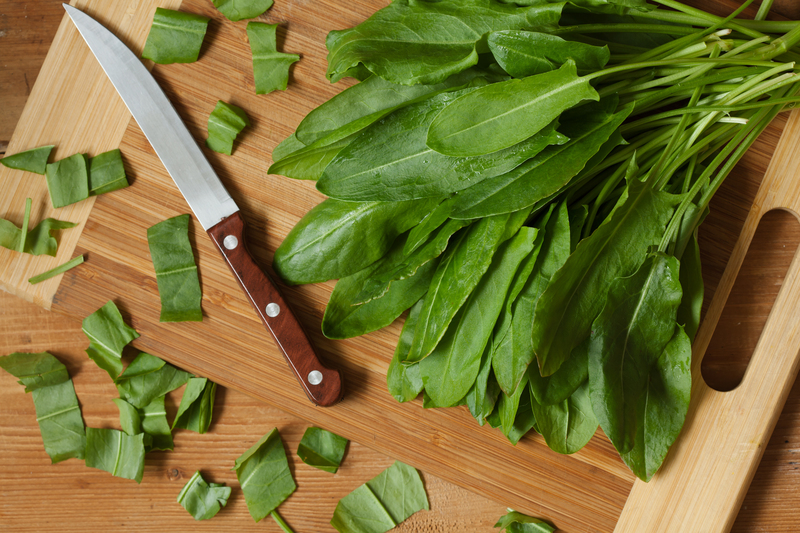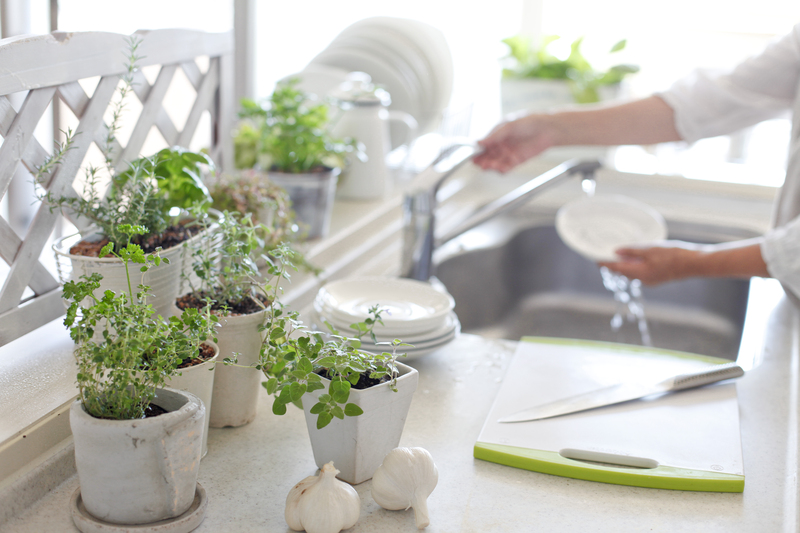Secrets to Successful Gardening with Your Dog
Posted on 24/05/2025
Secrets to Successful Gardening with Your Dog
Gardening is a passion many people share, offering tranquility, creativity, and connection with nature. For dog owners, gardening presents unique joys and challenges. Balancing a flourishing garden with a playful pup requires patience, understanding, and careful planning. In this comprehensive guide, discover secrets to successful gardening with your dog, tips for dog-friendly landscaping, and how to create an environment where both your plants and pet can thrive.
Why Gardening with Your Dog Can Be a Joy
When done right, gardening with your dog is immensely rewarding. Not only are you nurturing your garden, but you're also bonding with your canine companion. Dogs love to be with their humans and being outdoors in a backyard full of interesting smells and textures offers essential enrichment for them.
- Bonding Time: Working side-by-side on outdoor projects strengthens the human-dog relationship.
- Active Lifestyle: Gardening encourages both people and pets to stay active.
- Natural Instincts: Dogs enjoy sniffing, exploring, and sometimes digging, satisfying their instincts in a safe environment.
Understanding Your Dog's Natural Behaviors
Before creating a pet-friendly garden, it's important to understand common canine behaviors like digging, chewing, and marking. Successful gardening with dogs means embracing these instincts while adapting your gardening style.

Planning Your Dog-Friendly Garden
Planning is the most important secret to maintaining a beautiful garden with dogs. A thoughtful layout protects your plants and gives your dog space to enjoy.
Create Defined Boundaries
- Use Paths and Borders: Designate specific walkways with mulch, gravel, or stepping stones. Dogs often stick to clear trails.
- Raised Beds: Plant flowers and vegetables in raised beds or containers to protect them from trampling and digging.
- Natural Barriers: Low fences, hedges, or decorative rocks can gently remind your pet to keep out.
Choose Dog-Safe Plants
Many common garden plants can be toxic to dogs. To foster safe gardening with your dog, always research before planting.
- Dog-Friendly Plants: Sunflowers, marigolds, snapdragons, and roses (without thorns) are generally safe.
- Hazardous Plants to Avoid: Oleander, foxglove, sago palm, lilies, and azaleas are toxic if ingested.
- Edible Herb Beds: Parsley, basil, and rosemary are non-toxic and can safely share space with your pet.
Pet-Friendly Mulch and Ground Cover
Mulch keeps soil moist and weeds down, but certain kinds like cocoa mulch are dangerous for dogs. Instead, use:
- Pine, cedar, or shredded hardwood mulch
- Pea gravel or decomposed granite for paths
- Soft grass varieties, such as fescue or rye, that stand up to running paws
Training Your Dog for the Garden
Training plays a crucial part in gardening success with your dog. With consistency and patience, you can teach your dog to respect your space.
Establish Garden Rules
- Use Clear Commands: Teach simple cues like "stay," "leave it," and "off" to reinforce boundaries.
- Design a Play Zone: Set up a dedicated digging or play area with soft earth and toys so your dog can indulge natural behaviors without disturbing your plants.
- Supervise and Redirect: Regular supervision is key. Redirect your dog to the play zone if they wander into planting beds.
Positive Reinforcement
- Reward good behavior with treats, praise, or play.
- Be consistent with rules and positive feedback.
Tip: If you catch your dog digging or chewing plants, don't punish--redirect their attention and reward them for focusing on approved areas.
Design Elements for the Ideal Dog-Friendly Garden
Successful gardening with your furry friend goes beyond plant selection and training. The layout and amenities make all the difference.
Provide Shade and Water
- Install a shaded retreat with a dog house, canopy, or mature trees.
- Set up a water fountain or bowl for hydration during play sessions.
Interactive Features
- Water Play: Pups love splashing in small ponds or doggy splash pads.
- Fun Obstacles: Incorporate tunnels, ramps, and agility equipment for exercise.
- Sensory Gardens: Plant grasses and non-toxic herbs with interesting textures and scents to stimulate your dog.
Create Shelter and Quiet Zones
- Rest Areas: Mulched or grassy nooks offer cozy spots for your dog to nap out of the sun.
- Privacy Hedges: Shrubs can shield nervous or territorial dogs from street views.
Keeping Your Garden Safe and Healthy
Another key secret to gardening with dogs is ensuring the space stays healthy for both plants and pets.
Avoid Harmful Chemicals
- No Toxic Pesticides or Fertilizers: Use organic, pet-safe products and compost instead of chemical sprays.
- Secure Compost Bins: Decomposing food can attract dogs and be dangerous if ingested.
Secure Fencing is Essential
- Check fences regularly to ensure there are no gaps where dogs could escape.
- Opt for fences at least 4-6 feet tall, depending on breed and jumping ability.
- Bury chicken wire at the base to prevent digging out.
Troubleshooting Common Dog-and-Garden Dilemmas
Even the most well-planned yard can have the occasional mishap. Address these challenges promptly to maintain harmony.
Dealing with Digging
- Provide a "dig pit" filled with sand in a shaded corner, and encourage your dog to use it with toys or treats.
- Reinforce boundaries around flower beds and newly planted areas with temporary fencing or chicken wire.
Curbing Chewing and Plant Damage
- Spray bitter apple or other safe deterrents on leaves and stems if needed.
- Keep tempting sticks and mulch out of reach.
- Switch to hardy, non-toxic shrubs and grasses in problem spots.
Yellow Spots on Lawn
- Lawn burns from dog urine are a common issue. Train your pet to use a specific potty area with gravel or mulch, rather than grass.
- Water the area immediately after your dog urinates to dilute nitrogen.
- Choose urine-resistant grass blends, such as fescue and rye.
Protecting Young Plants
- Use temporary barriers until roots are established.
- Place wire mesh or cloches around delicate plants.
The Benefits of Gardening with Dogs
Despite the challenges, gardening with your dog brings many advantages:
- Promotes an active lifestyle for both owner and pet
- Provides mental enrichment and stimulation for your dog
- Offers the satisfaction of seeing your garden and relationship blossom
- Enhances your outdoor living space for the whole family to enjoy
Seasonal Tips for Year-Round Success
Spring and Summer
- Reapply mulch regularly to maintain soft ground for running paws
- Check fences and barriers after winter
- Refresh water stations frequently during hot weather
- Use shade cloth where trees are sparse
Fall and Winter
- Rake up fallen leaves and fruit that could be hazardous if ingested
- Store garden tools and chemicals out of reach
- Prepare a warm, dry shelter outdoors or bring pets inside during severe cold
Inspiring Garden Designs for Dogs and Owners
- Wildflower Meadows: Natural and resilient, wildflowers tolerate dog activity.
- Edible Gardens: Share homegrown produce with your pet--carrots, peas, and blueberries are safe treats.
- Cottage Gardens: Dense, layered plantings with defined paths work well for energetic breeds.
- Minimalist Modern: Simple hardscapes, artificial turf, and easy-care pots are perfect for busy dog parents.

Conclusion: Flourish Together
Finding balance between a thriving garden and a happy, healthy dog is completely possible. By designing smart, using dog-friendly plants, implementing clear boundaries, and providing enrichment, your yard can become a sanctuary for all who live there. The secrets to successful gardening with your dog are planning, patience, and a willingness to adapt.
Start today by observing your dog's habits, making small improvements, and celebrating every bloom your partnership produces. With love and a little know-how, both your garden--and your relationship with your dog--will flourish for years to come.
Frequently Asked Questions about Gardening with Dogs
Can dogs and gardens really mix?
Absolutely! With some planning and the right plant choices, you can create a beautiful, safe garden environment that your dog will love.
How do I stop my dog from digging up my plants?
Create a designated digging area, supervise playtime, and use temporary fencing until plants are established.
What are the most dog-friendly landscaping ideas?
Paths for exploration, sturdy dog-proof plants, shade, water features, and sensory-friendly zones are top picks for dog-friendly landscaping.
Which mulches are safest for dogs?
Avoid cocoa mulch. Stick with pine, cedar, or hardwood mulch.
What should I do if my dog eats a plant in the garden?
If you suspect your dog has ingested a toxic plant, contact your vet immediately. Keep an updated list of safe and unsafe plants handy for reference.
With these successful gardening with your dog tips, both your garden and your canine companion can enjoy an outdoor haven together!

